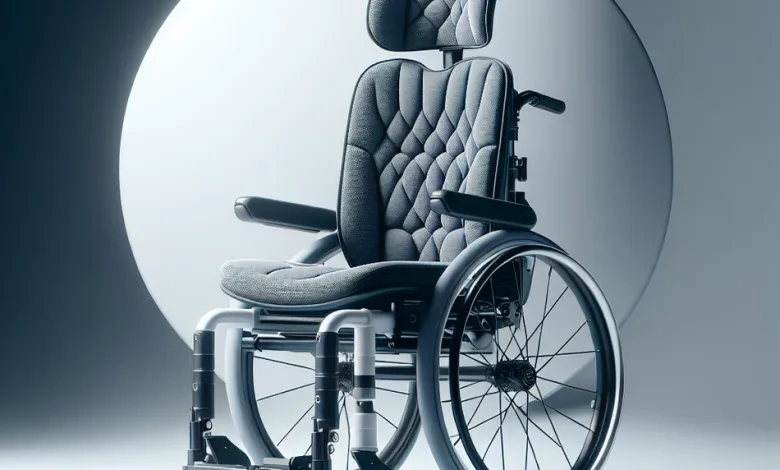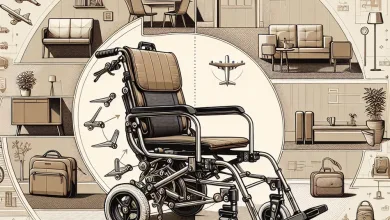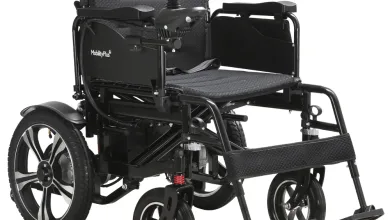Best Wheelchair Cushions: Your Ultimate Guide to Comfort and Support

Table of Contents
Conquering Comfort: Your Guide to the Best Wheelchair Cushion
When it comes to choosing the best wheelchair cushion, comfort and support are paramount. Wheelchair cushions enhance comfort and provide essential support, preventing various health issues such as pressure sores and poor posture. This comprehensive guide will explore different types of wheelchair cushions, weigh their pros and cons, and address key questions such as “cushion for wheelchair” and “wheelchair cushion UK.”
Understanding Wheelchair Cushions
What is a Wheelchair Cushion?
A wheelchair cushion is a specialized pad designed to provide comfort and support to individuals who use wheelchairs. These cushions are crucial for maintaining proper posture and preventing pressure sores. There are various types of wheelchair cushions, each offering unique benefits.
Why is it Important?
Using the right wheelchair seat cushion can significantly improve the quality of life for individuals who use wheelchairs. These cushions offer several health benefits, including:
- Pressure Relief: Prevents the development of pressure sores.
- Posture Support: Helps maintain proper posture, reducing strain on the spine and muscles.
- Comfort: Enhances overall comfort, making long periods of sitting more bearable.
Unveiling the Champions: Different Types of Wheelchair Cushions
The market offers various wheelchair cushions, each with unique strengths and weaknesses. Here’s a breakdown of the most popular types:
1. Gel Cushions for Wheelchairs:
Gel cushions for wheelchairs are designed to distribute weight evenly, providing excellent pressure relief and comfort. These cushions offer plush, pressure-redistributing comfort and an excellent seating experience. However, they may lack stability for some users.
| Pros | Cons |
| Excellent pressure relief | Heavier than foam cushions |
| Distributes weight evenly | Can be expensive |
| Provides superior comfort | May require more maintenance |
| Durable and long-lasting | Can feel cold in cooler climates |
| Reduces risk of pressure sores | Less portable due to weight |
2. Memory Foam Wheelchair Cushion:
Foam cushions are among the most popular wheelchair cushions. They are lightweight, affordable, and provide excellent support. Known for body-conforming comfort, these cushions provide excellent pressure relief. Remember that memory foam can retain heat, which may not be ideal for warmer climates.
| Pros | Cons |
| Provides excellent comfort | May compress over time |
| Conforms to body shape | Can retain heat |
| Good for pressure relief | Heavier than foam cushions |
| Affordable | Limited durability |
| Lightweight and easy to transport | May not be suitable for all users |
3. Air Cushions for Wheelchairs:
Wheelchair air cushions use air cells to adjust and distribute pressure evenly, offering superior comfort and pressure relief. These inflatable cushions conform to your body shape, offering exceptional pressure relief. They require regular air pressure adjustments for optimal comfort.
| Pros | Cons |
| Adjustable firmness | Requires frequent maintenance |
| Superior pressure relief | Can be punctured |
| Lightweight | May be noisy |
| Distributes weight evenly | More expensive |
| Customizable support | Learning curve for adjustments |
4. Fluid-Filled Cushions for Wheelchairs:
Similar to air cushions, these provide superior pressure relief but may require assistance with inflation and can feel bouncy for some. Fluid-filled cushions offer excellent pressure distribution and a cooling effect, making them ideal for long-term sitting. However, they can be heavy and require regular maintenance to prevent leakage.
| Pros | Cons |
| Excellent pressure relief | Can be heavy |
| Distributes weight well | May require more care |
| Comfortable for long-term use | Can be expensive |
| Reduces risk of pressure sores | Potential for leakage |
| Adapts to body shape | Less portable due to weight |
5. Specialized Cushions for Wheelchairs:
Specialized cushions provide tailored support and high customization for specific needs, ensuring enhanced comfort and pressure relief. However, they are more expensive and may require professional assessment for the best fit. Designed for specific medical conditions, these cushions might include features like posture control or moisture management.
| Pros | Cons |
| Designed for specific needs | Can be very expensive |
| Provides targeted support | Limited versatility |
| Excellent comfort and pressure relief | May be harder to find |
| Often includes advanced features | Can be bulky |
| Reduces risk of pressure sores significantly | Requires specialized knowledge |
6. Hybrid wheelchair cushions:
These champions combine the pressure relief benefits of air or gel with the stability and comfort of foam, offering the best of both worlds for ultimate comfort and skin protection. Hybrid cushions combine foam, gel, and air cushions to offer the best of all worlds.
| Pros | Cons |
| Combines benefits of multiple types | Can be expensive |
| Customizable support and comfort | May be heavier than single-material cushions |
| Excellent pressure relief | More complex maintenance |
| Versatile for various needs | Learning curve for proper use |
| Durable and long-lasting | May require frequent adjustments |
These pros and cons tables should help you understand the different benefits and drawbacks of each type of wheelchair cushion, making it easier to choose the right one for your needs.
Choosing Your Champion: Factors to Consider
Finding the best wheelchair cushion is a personal quest. Consider these key factors:
- Your Weight and Body Type: Ensure the cushion supports your weight capacity comfortably.
- Activity Level and Lifestyle: Active users might need a more stable cushion than those with a sedentary lifestyle.
- Skin Integrity and Pressure Sore Risk: Prioritize cushions explicitly designed for pressure relief if you are prone to pressure sores.
- Chair Type and Seating Posture: Consider your wheelchair’s seat depth and width for a proper fit. Your seating posture is also a critical factor.
- Budget and Insurance Coverage: Wheelchair cushions vary in price; check if your insurance covers part of the cost.
Beyond Pressure Relief: The Perks of Using a Wheelchair Cushion
A pressure relief cushion for wheelchair users offers more than just sore prevention:
- Improved Posture and Positioning: The right cushion supports proper posture, reducing pain and fatigue.
- Reduced Pain and Discomfort: A comfortable cushion minimizes pressure points, enhancing your ride.
- Increased Independence and Participation: Enhanced comfort enables more extended activity participation, boosting confidence and independence.
- Enhanced Skin Health: Pressure relief promotes healthy blood flow, which is vital for skin health.
Maintaining Your Wheelchair Cushion
To ensure your wheelchair cushion remains effective:
- Follow the manufacturer’s specific cleaning and maintenance guidelines.
- Regularly inspect for wear and tear.
- Clean according to recommendations; most cushions have removable, washable covers.
- Replace the cushion if it shows signs of damage or loses its pressure-relieving properties.
Wheelchair Cushion Covers: Keeping Your Throne Spotless
Wheelchair cushion covers to protect your cushion and simplify cleaning. When choosing a cover, consider:
- Material: Opt for mesh or moisture-wicking fabrics for airflow and comfort.
- Washability: Choose machine-washable, dryable covers for ease.
- Fastening Mechanism: Look for zippers, straps, or combinations for secure fitting.
- Durability: Ensure the cover is made from robust and long-lasting material.
Addressing Common Concerns: Conquering Cushion Challenges
Common concerns include:
- Wheelchair Cushion to Prevent Sliding Forward: Cushions with contoured or waterfall designs prevent sliding. Additional straps or wedges can enhance stability.
- Wheelchair Cooling Cushion: Cooling cushions may have gel inserts, breathable materials, or small fans to combat heat. Memory foam wheelchair cushions with ventilated channels are popular in the UK.
- Wheelchair Solid Insert: Solid insert cushions offer a firmer experience and are suitable for those needing more stability or finding air/fluid-filled cushions that are too bouncy.
FAQs about Wheelchair Cushions
Some common questions include:
- How often should I replace my wheelchair cushion? Most cushions last 1-3 years. Consult your healthcare professional.
- Do I need a prescription for a wheelchair cushion? Healthcare professionals may recommend some, but many are available without a prescription.
- Where can I buy a wheelchair cushion? Available at medical supply stores, online retailers, or directly from manufacturers.
- Can I wash my wheelchair cushion? Most covers are removable and washable. Follow the manufacturer’s cleaning guidelines.
- What is the best wheelchair cushion for pressure sores? This depends on individual needs. Consult your healthcare professional for recommendations.
Conclusion: Your Throne Awaits, Claim Your Comfort!
With this knowledge, you are ready to conquer discomfort and find the best wheelchair cushion. Remember, the ideal cushion enhances comfort, promotes well-being, and empowers you to explore the world confidently. Embark on your quest for comfort and claim your throne!



